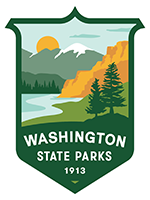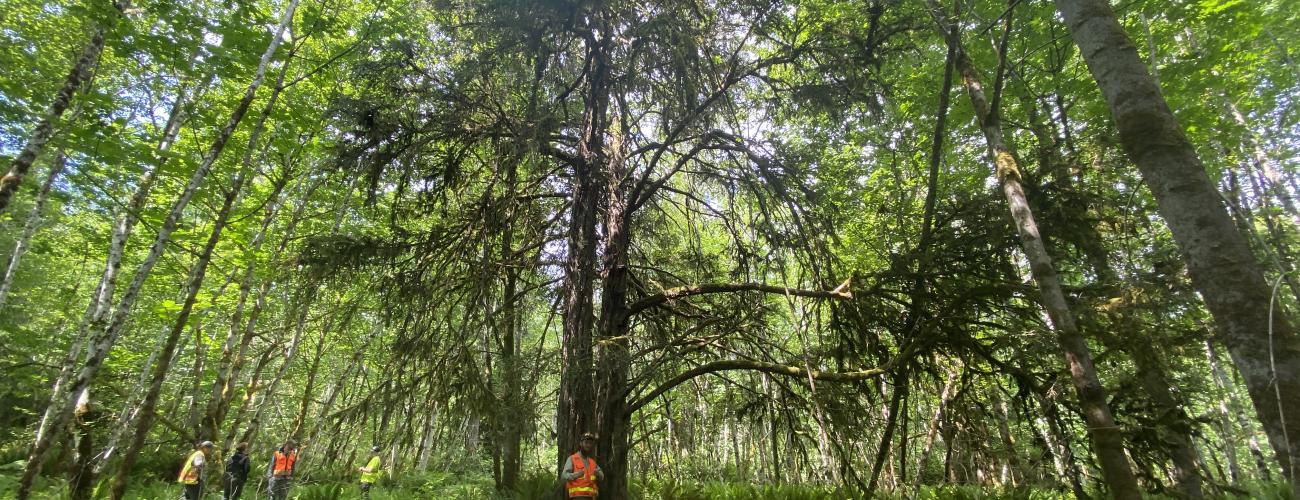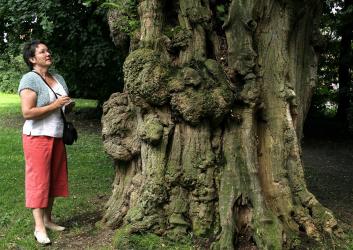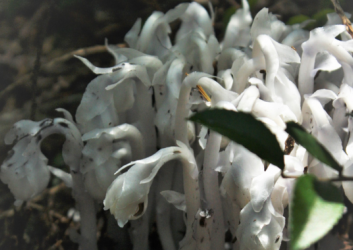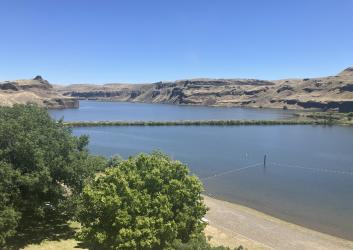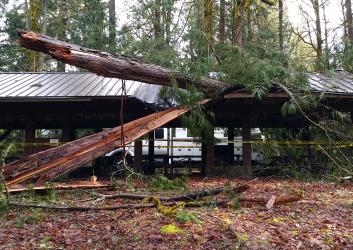Tree ID: Yew tree
By Beowulf Brower and the State Parks Arbor Crew
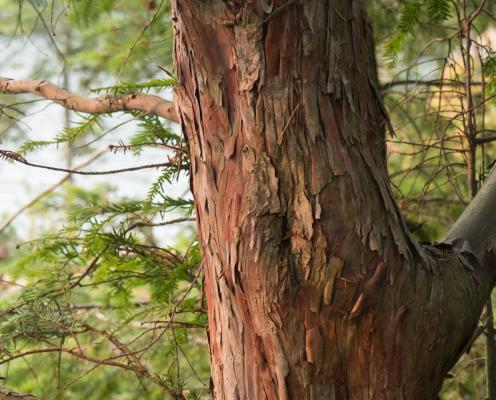
How do you identify a yew?
Compared to most of our trees, the yew is tiny. Most grow to a height of only about 60 feet and seldom exceed 20 inches in diameter. The bark, especially on the older trees, is unlike anything found in the region. It forms as irregular scales of reds, purples and browns. They don’t have a set growth pattern either: they may look like an overgrown shrub, a perfect miniature of a bigger conifer or something in between.
Yew needles are a waxy dark green with a flat appearance. They rise from the trunk or the middle of the branches. This dark color and seemingly random growth are adaptations so the yew can survive in shade where there’s less competition from its bigger, light-loving neighbors. The needles are not too distinct otherwise, but the cones are another story!
The yew cone looks like a berry. But that red “berry” is actually a modified wooden scale known as an aril. This foil allows the yew to tempt birds to aid the yew’s reproduction. Birds eat the yummy-looking arils, which pass right through, leaving the seed undamaged and deposited far from its parent. The undamaged seed is good for the tree and the bird, as the seeds are toxic. In other words, please don't eat them!
The yew is thought to be poisonous because of livestock poisoning reports in the Western Hemisphere, but many wild animals (like moose in Idaho and elk and deer in Oregon and Washington) browse on yews, making it an important food source in the forest. Due to its low height, it remains accessible to wildlife throughout its centuries-long life span.
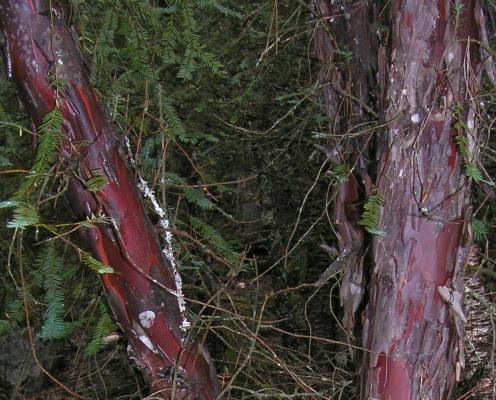
Small but mighty
The yew has a storied and fascinating history of medicinal use.
The last century saw the discovery of paclitaxel, a compound extracted from the bark of the Pacific yew, which became the basis for the widely used cancer drug Taxol.
Fortunately, the population of yews wasn’t decimated to make Taxol. The Northwest Forest Plan, which codified protections for old-growth forests where yews commonly grow, was passed in 1994, and a synthetic version of Taxol became available in the early 2000s. The gift from this tree has helped to treat over a million people to date.
A Slow and Steady Growth
Cool fact: a Douglas Fir that sprouts today will, in 50 years, be larger than a yew 10 times that age.
For the yew, longevity and tenacity are not represented by size, but by structure. The largest known Pacific yew was found to have grown less than an inch in diameter over 30 years. This tree is nearly five feet in diameter, so you do the math!
OK, we’re here to help: our back-of-the-napkin math puts this tree at well over 1,000 years old.
It’s hard to tell a yew’s age by counting rings. The wood is resistant to decay, but centuries of attacks by pathogens can leave the oldest trees hollow. Given the strength of the wood, this is usually of little consequence to the yew.
If they age slowly, they reproduce just as slow. Remember the bright red arils and birds that eat them? After the bird passes the seed, that seed can take months to germinate and years to establish itself, meaning any disturbance to a yew population may have long-lasting impacts.
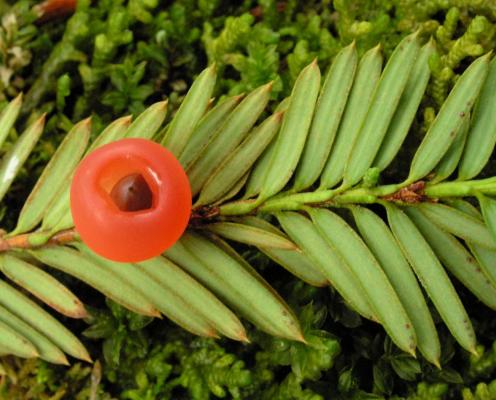
Looking to the Future
Though much of the Pacific yew’s traditional range has been altered by human development, ongoing conservation efforts aim to protect the remaining old-growth forests and the yew trees that live there.
While sensitive to climate change, the yew population in Western Washington is secure. Their biggest risk from climate change is increased wildfire.
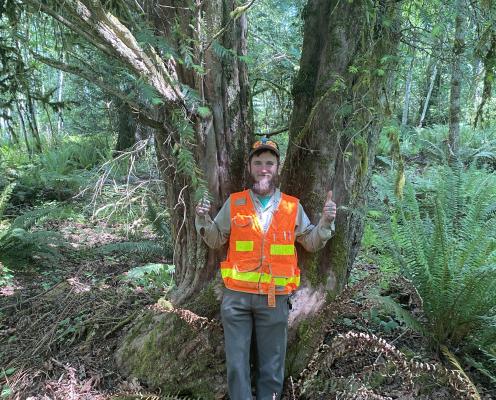
Be seeing yew!
Regardless of which park you’re in, you’re (usually) unlikely to find Pacific yews near the road. To find the really interesting ones, you’ll need to venture deep into forests where they grow protected by the tall canopy above them. Once your eye is tuned into their unique form, you’ll begin to see them easily wherever they grow.
Originally published February 19, 2025
